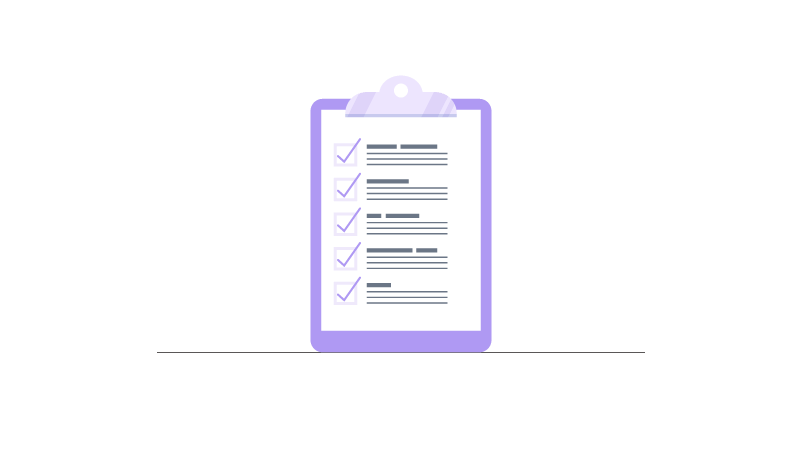Employee off-boarding- Do's And Dont's
Employee off-boarding, although underrated, is a vital process for any organization. It can be simply put through as the famous quote, "All's well that ends well." What your employees experience while leaving the company has a huge role to play in deciding whether they will be a protagonist of the company or not.
Because sometimes, even when the entire journey is worthwhile, a poor employee off-boarding process will change the complete outlook for the employee.
Therefore, off-boarding is all about saying goodbye in an easy and stress-free manner!
I think it will be right to mention here that employee onboarding and off-boarding are two sides of the same coin. While onboarding is essential for engaging new hires, off-boarding is crucial for transforming ex-employees into strong brand advocates.
It's just as important to send your employees off on their last day with dignity and goodwill as it is to welcome new employees into your organization.
The internet is flooded with articles on employee onboarding and hiring. But rarely do we find someone writing on employee off-boarding, let alone the best practices.
So, without further ado, let's dive right into it.

What Is Employee Off-boarding?
Employee off-boarding is the process of the formal separation of an employee from their employers.
It can be either by resignation, termination, or retirement. Employee off-boarding consists of a continuous process from putting down papers to leaving. A good offboarding experience ensures a smooth transition from an employee to a former employee.
It is one of the most crucial aspects of an employee lifecycle. Because, after separation, an employee can either be a protagonist or an antagonist of your company.
Either way, they are portraying a very important image of your company.
If the employee exit is smooth and effortless, they are most likely to act as an advocate of the company.
Similarly, suppose a departing employee is not very happy and the employee off-boarding process is strenuous and disappointing. In that case, the organization's reputation might be at stake.
The way you treat an employee while hiring them should be the same when they leave. It increases the likelihood of "boomerang employees".
Boomerang employees are ex-employees willing to come back and work for your company. This is becoming a growing trend with the advent of technology, says Brian Swider, an expert in boomerang employees.
Also, 76% of HR professionals say they accept hiring boomerang employees today than in the past.
This is because, with boomerang employees onboarding process is less time-consuming and much more cost-effective. They will already be familiar with the company culture and will fit in readily.
But this willingness of the employees to return depends greatly on how they are treated when they leave.
After putting down papers, employees should not feel they are not leaving on good terms. The exit process should be equally warm and nurturing. Most of the time, organizations forget this very important fact and end up with numerous negative reviews and negative "word of mouth marketing."
It is because an employee is the first ambassador of a company. Any enraging words can drastically hamper its reputation. This is why it is essential to maintain an employee off-boarding checklist for releasing employees. It ensures that no points are missed from HR's end while an employee leaves the company.
Why is Employee Offboarding Important?
Although less talked about, employee off-boarding is just as important in terms of employee engagement as employee onboarding.
When an employee is hired, you can try different ways to help them get accustomed to your company. There is a set of procedures that you follow. Either they are given training or made to go through orientation or an ice breaker session.
You get numerous chances to provide them with a wholesome experience. But when an employee leaves, you get only one shot.
It can either make them your ambassador or the most brutal critic of your company.
75% of companies do not understand how much value a formal employee off-boarding process brings to the organization.
In a recent event, Better.com CEO fired over 900 employees in a 5 minutes zoom meeting just before the holiday season.
The decision received backslash from everywhere. Social media was flooded with hate messages, and employees spoke openly about the toxic company culture. Furthermore, it got revealed that many top executives resigned in the light of this event.
It brought into the limelight many things that usually go unnoticed in an organization. What the CEO thought to be a mass layoff call turned out to be his worst blunder. It also brought into the light so many factors such as-
- Lack of employee engagement
- Toxic company culture
- Lack of formal employee off-boarding process
- Untrustworthy leadership
- Lack of empathy towards employees
This incident has driven more attention to the fact that employee off-boarding is, in fact, something that companies should take seriously.
Phases Of Employee Offboarding
Although off-boarding employees sound simpler than onboarding, it requires the same amount of effort. The employee off-boarding checklist includes several items that need to be done before an employee leaves.
These can also be called phases of the employee off-boarding process.
Here are some of the points-
- Have a concrete employee off-boarding checklist.
- Communicating the resignation, termination, or retirement.
- Knowledge transfer to new employees.
- Detailed documentation of roles and responsibilities.
- Re-posses company assets.
- Remove employee access.
- Reset all accounts.
- Process the left out payments.
- Perform an exit interview.
- Leaving the door open for boomerang employees.
Let's look at the points in detail.

1. Have a Concrete Employee Off-boarding Checklist.
HR teams should have a concrete plan prepared for every employee. It helps to finish everything on time and reduces confusion between the employee and employer.
Last-minute rush in any work is always accompanied by confusion, and you are more prone to mistakes.
Due to lack of a plan and time constraints, ex-employees still keep getting official mails, or their payments are delayed. For example- an employee didn't get their final pay till five months after they have left. It can be very frustrating for an employee who is leaving the company.
You can avoid these things by devising a small plan immediately after the employee has turned in their papers.
2. Communicating The Resignation, Termination, or Retirement.
Communication is very important in any decision, even when an employee leaves the company. It is because so many teams may be dependent on the exiting employee. A sudden change will break the whole pipeline of communication.
The resignation should be communicated to all the colleagues, seniors, and other employees required to be informed. It will keep everyone in the loop, and it will be easier for the employees leaving and their replacements to get hold of the tasks.
Communication (written or verbal) is very important before proceeding to further steps.

3. Knowledge Sharing
Knowledge sharing or knowledge transfer is important when your work needs to be delegated to a different person. The replacement may be unfamiliar with the job and might feel lost at times.
It will hamper productivity and lead to "role confusion" in the new employee.
You must inform the new employee about when and how they should begin. You must also assist them with their new position.
The employee who is leaving can also show the new hires the ropes. It is will help the incoming employee greatly and make them feel comfortable with the new environment.
Once the work is delegated to the new employees, they will know what to expect and what to work on. This way, the employee can leave without any loose ends while the new employee can seamlessly resume from where they left off.
4. Detailed Documentation Of Roles And Responsibilities
It needs to be done when the job role is complicated and requires intricate details. It will also be required in jobs where the work is designated to be done in a certain way, and employees cannot take another route.
The leaving employee will have to document the roles and responsibilities properly. It makes it easier for the one taking their place. They instantly know what to work on, what they need to train on, and how to proceed.
In cases where training is required, the employer will provide such facilities to the incoming employee.
5. Re-posses Company Assets
Repossessing company assets is one of the major tasks that need to be done while employee off-boarding.
Most companies provide basic amenities such as gadgets, credit cards, and other useful items to aid them in their professional lives. However, the employee is expected to return these before leaving.
It is the responsibility of HR to handle these issues and recover company assets before an employee leaves.
6. Remove Access From Company Profiles.
Before an employee leaves, HR must also make sure they are removed from all company data and profiles. Most of the security breaches in companies occur due to this very reason.
Every time there is a termination or resignation, there is also a chance of a potential data leak. It is critical to remove the exiting employee's access from every company profile to avoid this.

7. Reset All Accounts
Keeping an ex-employee in the loop will not just result in a security breach but also keep involving the employee in unnecessary situations.
They might keep receiving emails, get calendar notifications, etc. Therefore, work with IT as soon as the resignation or termination is communicated. The employee will then be removed from all company accounts, and passwords will be reset.
8. Process The Left Out Payments At The Earliest.
The most important aspect of ensuring a positive employee off-boarding experience is to process the remaining payouts on time.
When an employee leaves the company, fair and timely payment is what they expect the most. Any outstanding remunerations, leave encashments, etc., should be paid out as soon as the off-boarding process is initiated.
Also, employees might have many important commitments and dues. Therefore, an early payout will be greatly appreciated by any employee who is leaving.
9. Perform An Exit Interview
An exit interview or an exit survey gives you an idea of the strength and weaknesses of your company that you may not know ideally.
It gives you a completely different viewpoint of your organization. You will see a completely different picture of the same company. It is because an employee and an employer have different perceptions of the company and its culture.
An exit interview is like formal feedback that your employee will give before departing. Exit surveys are always the best form of feedback since the power quotient does not remain, and employees can speak truthfully without inhibition.

10. Leave The Door Open.
Boomerang employees are a thing nowadays. And it is easier for the company as well. Boomerang employees call for less training, fewer costs, and more productivity because they are already accustomed to the company culture.
But only a smooth off-boarding process will lead to boomerang employees. A poor off-boarding process will leave a rough experience in the employee's mind.
Also, keeping a good relationship with former employees is necessary to avoid unnecessary bad reviews. You can set up an alumni group and let them know of open positions. Another way could be keeping active referral programs where past employees will be rewarded when the referral gets hired.
It will make them feel warm and welcome. There will be no bitter employee-employer relations to jeopardize the company's image.
Is Employee Offboarding Related To Employer Branding
In simpler words, employer branding is not directly related to employee off-boarding. But, it is the result of a good employee off-boarding process.
If your employee onboarding is messy, complicated, and the whole process is rough, employees will get frustrated. They will instantly develop a negative attitude towards the company and become resentful.
It will result in many negative reviews and comments on social media sites. It impacts employer branding significantly. A bad reputation in the market will also lead to a slower influx of employees.
All those years of employer branding can be saved if you manage to just send off an employee with a smooth off-boarding process.
Does a Bad Offboarding Process Really Backfire?
Imagine you have a well-performing employee who is about to leave. They have initiated their resignation and informed the HR and manager.
You asked them to submit a few documents and to get in touch with HR. And then you forget the whole thing. You did not have a proper discussion, nor did you make an effort to understand their reasons.
They will feel left out and avoided and eventually start growing resentful towards the end of their notice period. Employees will have nothing but only bad memories and experiences when they leave.
They have had good experiences too, but it is human tendency to prioritize only the bad ones. They will focus more only on the last few days and end up writing a bad review.
This review will directly or indirectly do hamper the reputation of your company!
You could have easily avoided this situation just by providing a decent off-boarding process.
Wrapping it up
By now, you must have already understood how important Employee Offboarding is. Every employee deserves to depart with the same level of respect as when they are bought onboard.
How you treat your employees portrays a lot about your company's culture. And these are major factors that help in the retention of employees because employees are a company's first ambassadors and first customers!

















